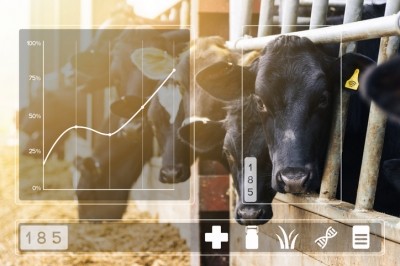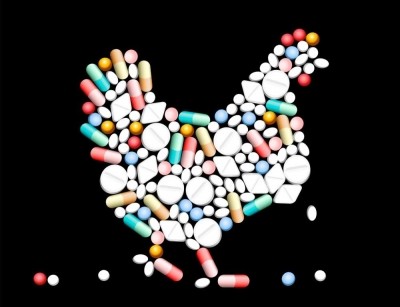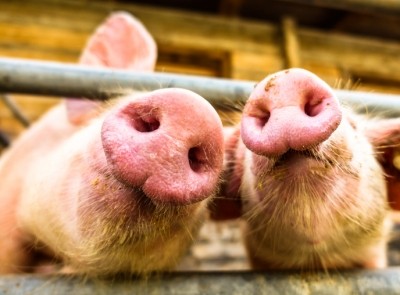FDA called on to continue efforts to improve antibiotic data reporting

The organization is calling for the US Food and Drug Administration (FDA) to proceed in efforts to improve how data regarding the sales of medically important antibiotics in feed or with livestock are reported.
“For us, the goal is we want to protect the lifesaving antibiotics for when we need them in human and animal medicine,” said Karin Hoelzer, senior officer for health programs with Pew Charitable Trusts.
“The way we think about this is that data and science should be driving antibiotic stewardship efforts and having data on how antibiotics are used, why antibiotics are used and antibiotic use trends over time is really foundational to target interventions like the development of vaccines and other antibiotic alternatives and to see what the efficacy of policy actions … what that really is.”
The current data collected and released by the FDA covers the sales of antibiotics with estimates related to major livestock species including chickens, cows, pigs and turkeys, Pew reported. However, a plan to provide more information using a biomass methodology was released in 2017.
The process is intended to provide an estimate of “annual antimicrobial drug sales adjusted for the size of the animal population (the animal biomass) potentially being treated with those drugs,” the FDA said.
“The adjusted estimates will provide insight into broad shifts in the amount of antimicrobials sold for use in food-producing animals and give the agency a more nuanced view of why sales increase or decrease over time in a manner that is specific to US animal production.”
A similar process is used in Canada and by the World Organization for Animal Health, the FDA added.
However, despite proposing use of the new calculation in 2017 and having an open comment period that concluded in November 2017, little public work has been done on the project since that time, said Hoelzer.
“FDA published the proposal for the biomass method quite some time ago and, for us, it’s important to have that method finalized and applied to antibiotic sales data to make the antibiotic sales data more useful,” she told us.
As part of the organization’s push for FDA to move forward with the biomass methodology Pew released an assessment of public comments gathered on the proposal Thursday [June 6], she said.
“What we found was that even though most of the concerns that were raised were valid there were ways of addressing them and it shouldn’t deter FDA from finalizing the methodology."
Moving antibiotic reporting forward
Implementing the new methodology, by improving the amount of information reported regarding the sales of antibiotics would be one way to help target intervention efforts or funding for research to develop alternatives, said Hoelzer
“The sales data are one of the very few insights we have on how antibiotics are used in animal agriculture and making that data as useful and insightful as possible is a priority to really understand better how antibiotics are currently used in animal agriculture,” she added.
When asked about the process the FDA said that it received “valuable feedback” on the proposed changes.
“While many of the comments were not in favor of additional analysis of estimated species-specific sales data, FDA-CVM [Center for Veterinary Medicine] believes that applying a denominator (e.g., CVM’s proposed biomass method) to this data provides important context,” an agency spokesperson told us.
“Applying such an approach would enable us to adjust antimicrobial sales data to take into account the size of the animal populations potentially being treated with such drugs and would allow for a more nuanced interpretation of animal drug sales over time in a manner that is specific to US animal production.”
The agency also is considering “alternative reporting systems” for the biomass data as additional refinement may be needed, she said.
“CVM currently expects to see the first application of a biomass denominator included in a more comprehensive report on antimicrobial stewardship that integrates and analyzes available information about antimicrobial use and resistance in animal agriculture to help assess the progress of efforts to foster antimicrobial stewardship and reduce the development of antimicrobial resistance,” the spokesperson said.
Concerns raised and moving forward
The common concerns found in the assessment included that providing antibiotic sales data is an imperfect picture of how much was used, Pew reported. There are limitations to the data because the amount sold does not necessarily mean all of the product was fed or given.
An additional concern is that adding a biomass adjustment would increase incorrect interpretations of the data published, the organization said. There also were questions about the potential for biomass-adjusted data to be compared to similar data from other countries that were calculated in a different manner and could be used to generate incorrect conclusions.
Another concerns was that more information on how the calculations would be completed is needed, Pew said.
However, none of the challenges present an insurmountable problem, the organization said.
A final concern raised in the comments was that providing biomass-adjusted sales data for livestock would draw undue scrutiny to the use as that same information was not available for sales of antibiotics for use in human medicine.
However, unlike the other questions or concerns, which were considered valid, the organization did not find that to be an appropriate concern, said Hoelzer.
There is already more information on the use of antibiotics in human medicine published than what is reported for livestock, the organization said in its assessment.
In addition to finishing the development of and starting to apply the biomass methodology, there are other steps that Pew is hoping to see the FDA make as it works to address antibiotic stewardship in livestock production, said Hoelzer. This includes updating duration limits on medically important antibiotics.
“Based on our own research, we know that one in three medically important antibiotics don’t have defined durations of use and that creates an issue that needs to be addressed,” she said. “We hope that FDA, as outlined in the five-year plan, starts addressing that issue very soon.”















